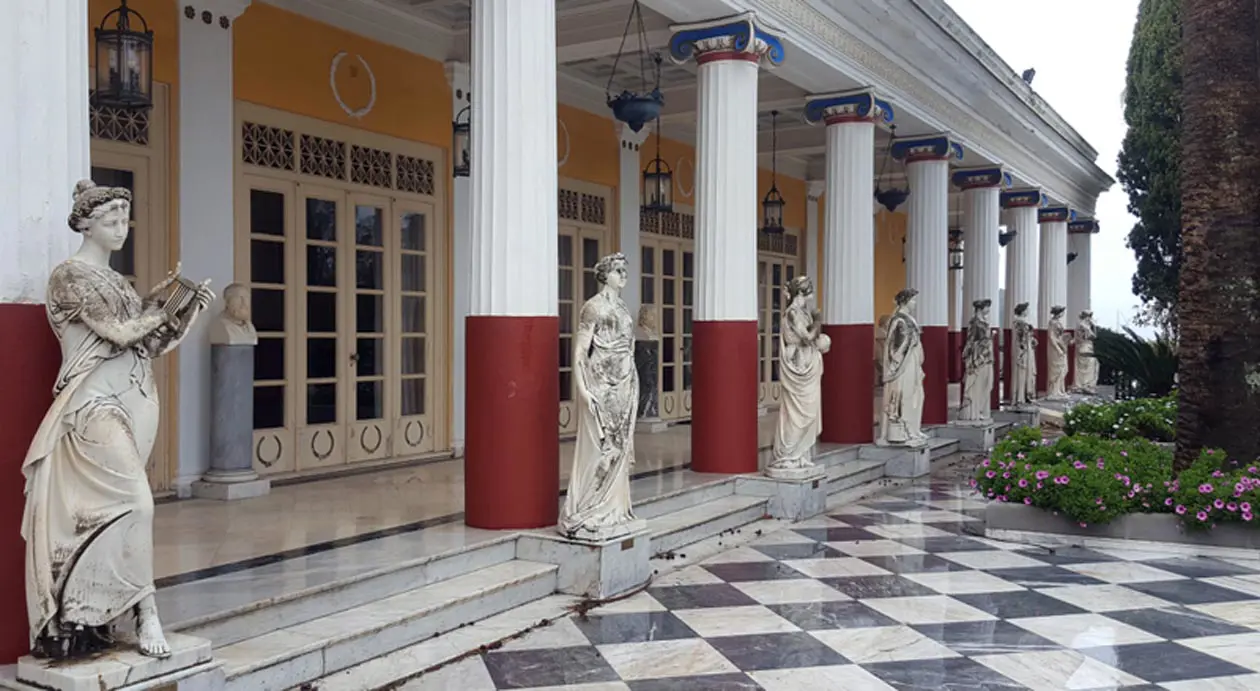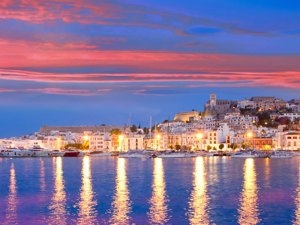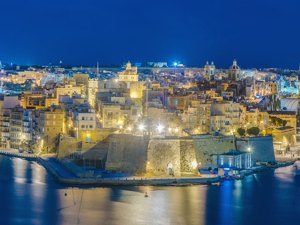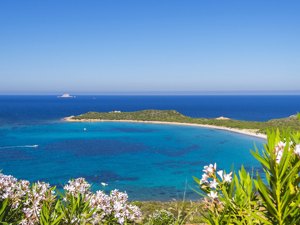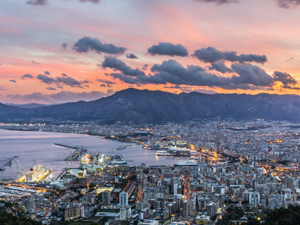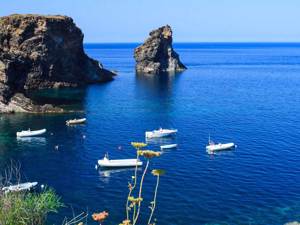The largest preserved medieval town in Greece
A wonderful climate, soft sandy beaches and ancient monuments, together with green expanses and mountains, make Corfu one of the preferred destinations of both Greek and foreign tourists. Its strategic position, as a maritime border between Greece and Albania, has made it a target for various occupations over the centuries, which have influenced the island’s culture, traditions and customs. The history of its Greek name is taken from mythology: legend states that Poseidon, the god of the sea, fell in love with Korkyra, the daughter of Asopus, and took her to the island and gave it her name. Later the island took on the international name of Corfu from the two acropolises situated on two peaks (koryphés).
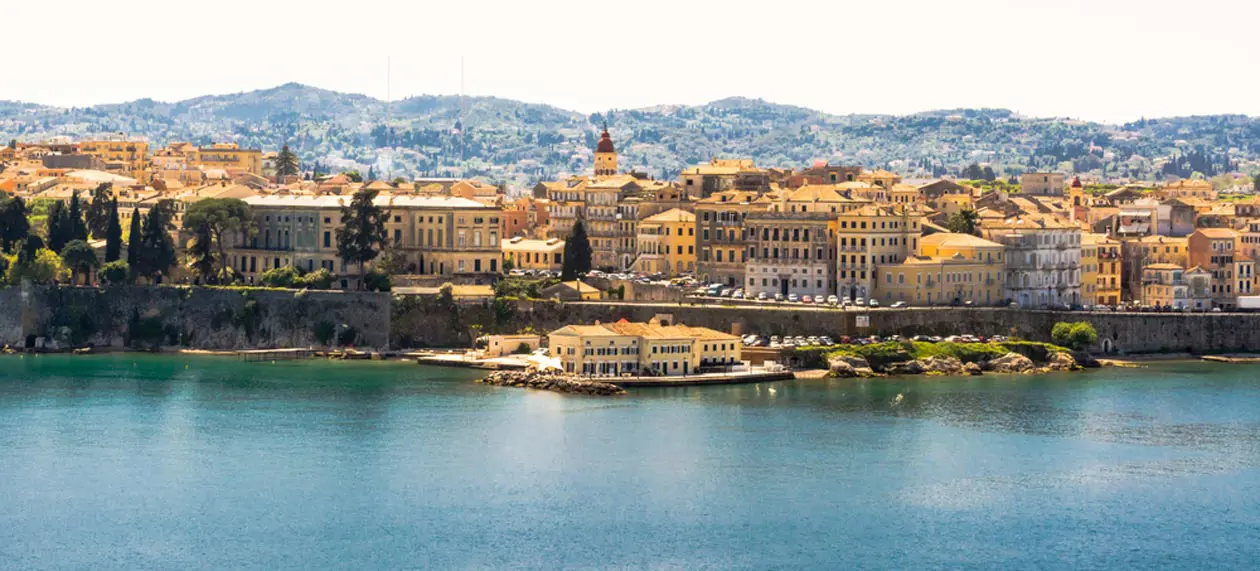
Corfù Photo: Copyright © Sisterscom.com, Shutterstock
The old town of Corfu
The historic centre is found in the old town, which because of its perimeter walls could not be extended and therefore has a unique architectural construction of tall houses and narrow alleyways. It is the largest preserved medieval town in Greece and since 2007 has been a UNESCO World Heritage Site.
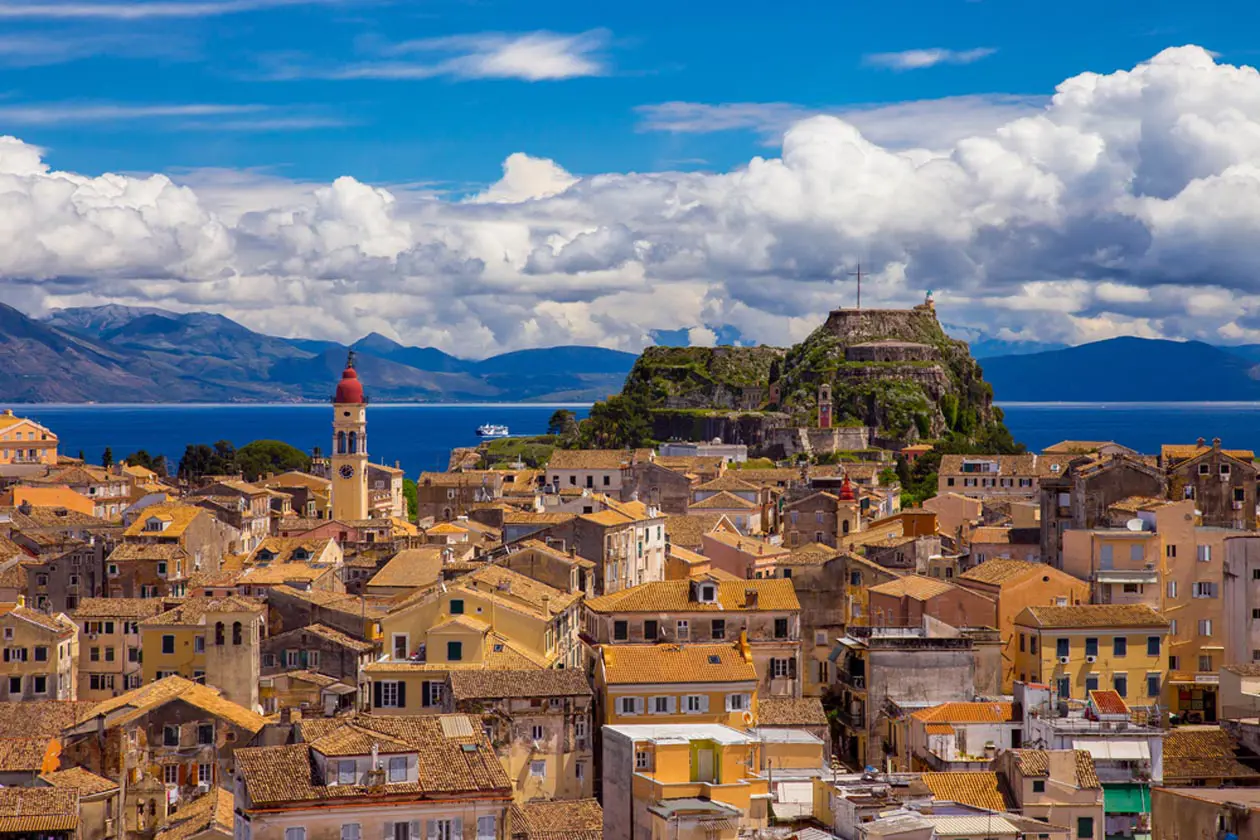
Corfù Photo: Copyright © Sisterscom.com, Shutterstock
The main square is the Spianada, one of the largest in Greece, which was laid out by the Venetians during the seventeenth and eighteenth centuries in front of the Old Fortress to provide a large space in the event of enemy attack. Today it is the town’s most popular meeting place with both residents and tourists and also the site of important processions, music concerts and parades, as well as cricket matches - a legacy of the British, who are still present in large numbers.
The Listòn in Corfu
The Liston with its characteristic porticoes is one of the most celebrated buildings of the city. The name derives from the Venetian (Venice, in fact, ruled over Corfu for over four centuries) and in dialect means ‘slabs of marble’, which were used to pave the square: ‘far el listòn’ in Venetian means ‘stroll around the square’. Around the Liston, which was inspired by the elegant Rue de Rivoli of Paris, there is a series of patisseries, coffee houses and shops, which make the area a fashionable meeting place for inhabitants and visitors.
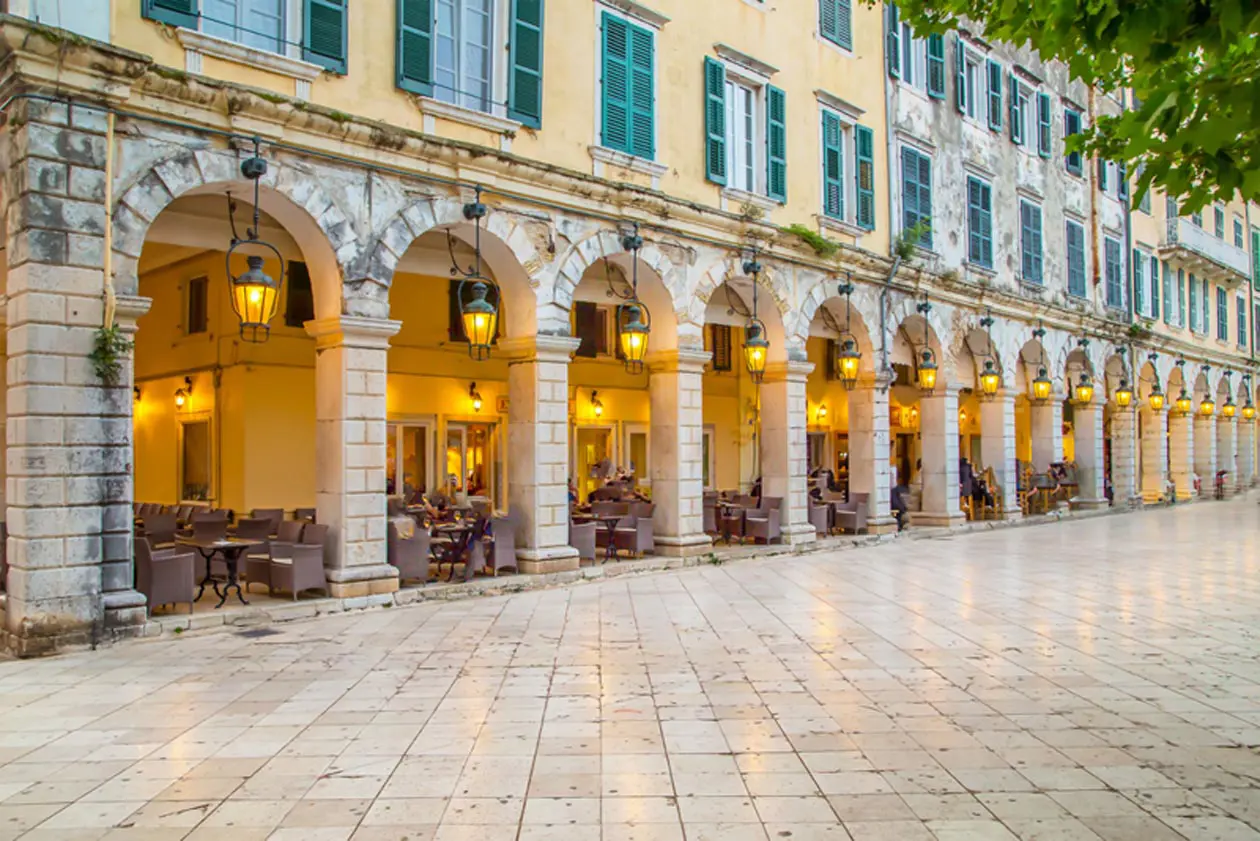 The square and the porticoes with patisseries, coffee houses and shops. Photo: Copyright © Sisterscom.com, Shutterstock
The square and the porticoes with patisseries, coffee houses and shops. Photo: Copyright © Sisterscom.com, Shutterstock Palace of St. Michael and St. George in Corfu

Corfù Photo: Copyright © Sisterscom.com, Shutterstock
An extraordinary museum is the Museum of Asian Art in the Palace of St. Michael and St. George, which houses some 10,500 works from India, China, Korea, Pakistan and Japan. The same building is also home to the Municipal Library, with works by Corfu’s artists from the nineteenth and twentieth centuries. To the north of the Liston is the pedestrian street of Agios Spyridon, which is overlooked by the red-domed bell tower of the church of Agios Spiridonas, protector of the island.
The impressive buildings in Corfu
Town Hall Square was the most important square during the era of Venetian domination and is surrounded by impressive buildings such as the Lodge of the Nobles, one of the most beautiful buildings in the town, which in 1720 was transformed into St. James Theatre and is today the site of the Town Hall. In the south of Corfu stands the splendid Achilleion Palace, the summer residence of Sissi, Empress Elisabeth of Austria, which has a spectacular garden with fine statues, including one of Achilles, the hero most dear to the empress.
The Mon Repos

Corfù Photo: Copyright © Sisterscom.com, Shutterstock
Another important residence is Mon Repos, a neoclassical building used by the former royal family as a summer residence. The building houses the small but interesting Paleopoli Archaeology Museum. Paleopoli is in fact, an archaeological site of ancient Corfu, situated near to Mon Repos, with an agorà, square, Temple of Apollo and Roman baths.
The churches in Corfu
There are numerous churches given the great religiousness of the island’s inhabitants. In addition to the Church of Agios Spyridon, from where on Palm Sunday a procession dedicated to the saint departs for the town accompanied by the 20 philharmonic orchestras of Corfu, other churches worthy of visiting include Panagia Antivouniotissa with the Byzantine Museum, Panagia Spiliotissa in the Port of Corfu, and Panagia ton Xenon (of the foreigners).
 Agios Iasonas Kai Sosipatros. Photo: Copyright © Sisterscom.com, Shutterstock
Agios Iasonas Kai Sosipatros. Photo: Copyright © Sisterscom.com, Shutterstock
Pastitsada. Photo: Copyright © Sisterscom.com, Shutterstock
The local specialities of Corfu
The taverns of Corfu offer local specialities such as Pastitsada, a pasta dish with a sauce made of pieces of beef or chicken, Sofrito, a spicy pasta dish, Numbulo, a type of smoked ham, or different appetisers based on aubergine cream, yoghurt, cucumbers or fish eggs spread on bread.
Text by Anna Glik
Avion Tourism Magazine
Photos for editorial use only: Sisterscom.com, Shutterstock
Copyright © Sisterscom.com
Photos for editorial use only: Sisterscom.com, Shutterstock
Copyright © Sisterscom.com
Video: www.visitgreece.gr
Tourism Board
www.visitgreece.gr
Partnership with Booking.com
Where to sleep in Corfu

Corfù Photo: Copyright © Sisterscom.com, Shutterstock
Corfù is a welcoming city and offers different possibilities for accommodation.
To find the ideal hotel and the best offers you can do a search for the stars but also for districts or landmarks.
DISTRICTS
Hotels in the districts
WHERE TO GO in corfu
Monuments and Museums in Corfu

Photo: Sisterscom.com, Shutterstock
PALACE OF SAINTS MICHAEL AND GEORGE
The Palace of Saints Michael and George is an important building built between 1819 and 1823 according to the Georgian architectural style. It boasts lavish decorative elements, grand entrance gates and a Doric colonnade. The palace served as the residence of the British Lord High Commissioner of the Ionian Senate and of the Most Distinguished Order of Saint Michael and Saint George. Nowadays it houses the remarkable Asian Art Museum which numbers approximately 10,500 art objects from India, China, Korea, Pakistan and Japan.

Photo: Sisterscom.com, Shutterstock
OLD FORTRESS
The Old Fortress, built on a peninsula opposite Spianada. Fortifications began as early as the Byzantine times and were completed by the Venetians who turned the peninsula into an islet. An impressive bridge links it to the city. Noteworthy monuments on the fortress grounds are: the main entrance gate; the Savorgnan, Martinengo, and Mandraki ramparts; the land and sea surveillance watchtowers; the Agios Georgios basilica, built in 1840.

Photo: Sisterscom.com, Shutterstock
SPIANADA
La Spianada, the city’s central square as well as one of the country’s largest and most impressive ones in Greek. It was designed for defense purposes during the 17th-18th century when the Venetians opened up “Spianata” in the Old Fortress’ foreground, so as to widen their firing range in case of an attack. This is the most popular promenade area for locals and visitors alike. It is also the place where most cultural events take place like concerts, religious processions, parades as well as cricket matches.

Photo: Sisterscom.com, Shutterstock
CAMPIELLO AND MOURAYA
Campiello is the Corfu’s oldest neighbourhood whit Panagia Kremasti church and the square with the Venetian well.
Mouragia instead is one of the city’s most scenic neighbourhoods. Here you can visit Dionysios Solomos Museum, the former house of the poet who wrote the “Hymn to Freedom” (Greece’s National Anthem) and who lived there for almost 30 years until his death in 1857.

Photo: Sisterscom.com, Shutterstock
TOWN HALL SQUARE
The Town Hall Square, the most important square during Venetian times, is flanked by remarkable buildings such as: the Lodge of the Nobles, converted in 1720 into San Giacomo Theatre, to become today’s City Hall; the Catholic Metropolitan Church of San Giacomo e San Cristoforo; the residence of the Catholic Archbishop, that today housing a Bank of Greece branch.

Photo: Sisterscom.com, Shutterstock
ARCHEOLOGICAL MUSEUM
The Archeological Museum houses finds from archeological sites around the city; the most impressive one is the enormous Gorgo pediment from the Doric temple of Artemis.
Excursions in Corfu

Photo: Sisterscom.com, Shutterstock
MON REPOS
Mon Repos, 3 km south from Corfu, is a beautiful place to visit. The neoclassical mansion that had been used by the former Greek royal family as a country residence. It was originally built for Sir Frederick Adam, the British High Commissioner of the Ionian Islands and Diamantina Palatianou, his Corfiote wife. It is a 19th century neoclassical architectural gem and now houses the small yet interesting Archeological Museum of Palaiopolis.

Photo: Sisterscom.com, Shutterstock
PALAIOPOLIS
Palaiopolis is the archeological site near Mon Repos which was ancient Corfu’s agora. Make a point of visiting the Temple of Apollo, the Roman baths, the Agora and a late Hellenistic times edifice.
Partnership with GetYourGuide
Discover all tours
You might be interested in
Other destinations
Airports nearby Corfu

